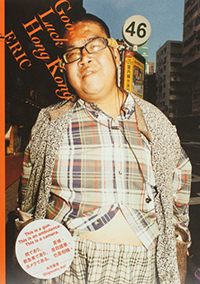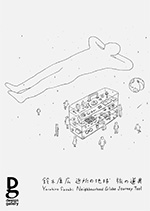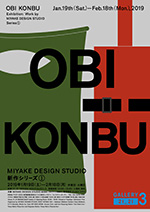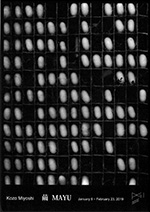 |
Picks is a monthly sampling of Japan's art scene, offering commentary by a variety of reviewers about exhibitions at museums and galleries in recent weeks, with an emphasis on contemporary art by young artists. |
 |
 |
|
|
 |
|
| Kazuyuki Kawaguchi: Prospects Vol. 3 |
| 13 - 30 January 2019 |
Photographers' Gallery
(Tokyo) |
 |
| The third in Kawaguchi's "Prospects" series of solo outings comprised photographs of various locations throughout Japan, from Aomori in the north to Fukuoka in the south. His subjects are downtowns that have fallen into decline, a condition he scrupulously captures with an eye for the minutest details. His focus on textures notwithstanding, however, the underlying reality is too terrible to ignore. One feels as if one is standing next to Kawaguchi, staring at these towns as they decay inexorably toward extinction. |
|
|
 |
 |
|
| Eric: Good Luck Hong Kong |
| 11 January - 2 February 2019 |
Zen Foto Gallery
(Tokyo) |
 |
| From the outset of his career, Eric's style has been that of the street snap, aiming his camera at people he happens to pass by. Born and raised in Hong Kong, he left for Japan in 1997 and has made it his home while studying photography, then earning a name for himself as a prizewinning photographer. His decision to revisit and recapture his hometown must have taken some resolve. The images in this series (published in a book last November) are surprisingly intense. |
|
|

|
 |
 |
|
 |
 |
 |
| Yasuhiro Suzuki: Neighbourhood Globe Journey Tool |
| 23 January - 17 February 2019 |
Matsuya Ginza Design Gallery
(Tokyo) |
 |
| Suzuki is known for observing everyday scenes or phenomena through his own idiosyncratic filter, turning them into art via what he calls "allusions" -- more like visual similes, perhaps. One classic example is his Ship of the Zipper, a boat he built that really does resemble a zipper. His ingenuous explanation: "A ship moving through the sea, leaving a wake behind it, looks like a zipper to me." This recent show, consisting of walls covered with sketches of his myriad ideas, drew the viewer deep into the alternate universe that is Suzuki World. |
|
|
|
|
|
|
|

|
 |
 |
 |
 |
| Issey Miyake: Obi Konbu |
| 19 January - 18 February 2019 |
21_21 Design Sight
(Tokyo) |
 |
| Iconic fashion designer Miyake's work has, if anything, attracted even more attention in recent years with growing recognition among designers of all stripes that he is a creator not only of fashion, but of products. His ten-year-old project Reality Lab has led the way in researching and developing new materials, serving as a bellwether for future social trends. The Obi and Konbu product lines displayed here, both of them Reality Lab creations, are handbags made by new processes with new materials. |
|
|
 |
 |
| Izumi Matsumoto: Empty Shell |
| 6 - 17 February 2018 |
The National Art Center, Tokyo
(Tokyo) |
 |
| For many years Matsumoto worked as an in-house package designer for Shiseido. Upon retirement, though, he began a new career as a photographer of insects, which he describes as the embodiment of "package designs of life." Insects, he explains, are encased in an exoskeleton, a protective "package" that they periodically shed. In this recent solo show, Matsumoto offered some stunning hi-res close-ups of these cast-off husks -- exquisite figures still exuding the life force that inhabited them a short while before they were photographed. |
|

|
 |
 |
 |
 |
|
| Kozo Miyoshi: Mayu |
| 8 January - 23 February 2019 |
PGI
(Tokyo) |
 |
| Miyoshi has been taking pictures with a large-format view camera since the 1980s. The subject of this series is the silk cocoon (mayu), a presence with a strangely mystical aura. Each cocoon houses a single silkworm, and each boasts its own subtle variations on the basic simple shape, shifting in appearance according to the angle and light by which one views it. Miyoshi has lovingly captured the arrays of these living forms as they sit, each in its own enclosure, in the lattice-like frames known as mabushi. |
|
|
 |
 |
 |
| Beyond the End: Ruins in Art History |
| 8 December 2018 - 31 January 2019 |
The Shoto Museum of Art
(Tokyo) |
 |
| One unique aspect of this exhibition on the theme of ruins as art is its demonstration that in Japan, the notion of ruins as an object of aesthetic appreciation was a modern import from the West. Consider that ancient European structures were generally made of stone or brick; even when they crumbled, remnants survived that gave a hint of past glories. Japan, on the other hand, was a land of wooden structures that vanished without a trace, leaving little to wax rhapsodic or nostalgic about. |
|
|
|
|
|
|
|
|
|
 |
|